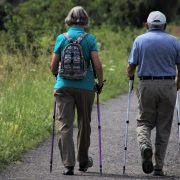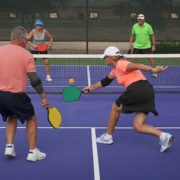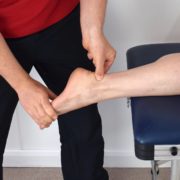Avoiding Radiofrequency Ablation in Your Back – Success Story
Have you heard of Radiofrequency ablation (RFA)?
If you suffer from chronic back pain – there’s a good chance you have. Perhaps it’s even been recommended to you?
It’s a common procedure used to disable nerve fibers that are carrying the pain signal to your brain.
Your brain is what decides whether or not you’re going to experience pain. So the goal behind this procedure is to kill (or in this case burn) the “middle man” – the nerve that is responsible for signaling the pain trigger. An electrical impulse is transmitted through a needle that is designed to burn the nerve endings responsible for your pain.
If it works – the results last anywhere from 6 months to a year – but they typically aren’t permanent.
Most of the people I talk to who rely on this for pain relief have to go back at least once per year or more.
But in some cases… the procedure eventually stops working all together…
And then what?
Well… you’ve usually got just two choices…
- Live with it
- Get surgery
The good news?
You don’t have to accept either of these options and you don’t even have to rely on this procedure at all if you don’t want to.
How do I know?
Because 80% of all spinal pain is mechanical in nature – which means it’s due to poor or insufficient movement habits. These habits – over time – result in compensatory strategies in your body. These compensatory strategies eventually lead to “pissed-off” muscles, ligaments, or nerves – which result in pain.
So you see…
Getting a procedure like RFA is really only a bandaid.
Why not find out what compensatory strategy might be happening in your body – and from there – what caused it to begin with?
That’s what we prefer to do and I’m excited to tell you about a recent success story where this actually happened…
I was re-evaluating one of our patients (“L”) this week and even though she is still working through some back pain – it’s nothing like when we first began working together.
When we first met – she couldn’t walk very far without back pain and she didn’t even think about getting on a bike. (Biking, hiking, and staying active are things she LOVES to do for herself and with her husband)
When we spoke this week – she was not only walking – but starting to do some trail walking – and she was using her bike trainer at home regularly – all with minimal or no back pain. The next step for her is to get on the road with her bike – we have a goal of her riding 30-50 miles!
I am confident we’ll get there 🙂
But the most important part of this ongoing success story that I want to share is this…
“L” told me that the most valuable accomplishment from working with us so far is that she hasn’t had to return for any RFA!
I almost cried when I heard this… not even remotely exaggerating…
Because not everyone has the courage to see a program through and trust in the process.
But “L” did – and I’m so proud of her for it.
She said one of her goals was to not need this procedure anymore…
I’m excited to say that as of today – she’s officially far past the point when she would normally have returned for her RFA procedure.
And it’s because of our program!
The biggest motivator behind everything I do – every email or article I write – is to empower you.
My mission behind CJPT & Pilates is empowerment by education.
We aim to give you all the information you need so you can make the best decisions for your health – and hopefully those decisions involve less pills, less procedures, and certainly not surgery 🙂
I wanted to share this story with you because it is a perfect example of just that.
Yes – “L” still has back pain – but it’s progressing and we’re working through it – but on her terms and not on the procedure/RFA’s terms.
If you want more details on how we helped “L” work through her chronic back pain and avoid procedures like RFA…
CLICK HERE to talk to someone on my Client Success Team to see if we are a good fit to help you avoid RFA.
Ready to get rid of your back pain? Lucky for you we have a totally FREE guide written by leading back pain specialist, physical therapist, and movement expert, Dr. Carrie Jose! CLICK HERE to read her BEST tips and advice on how to start easing back pain and stiffness right away!











